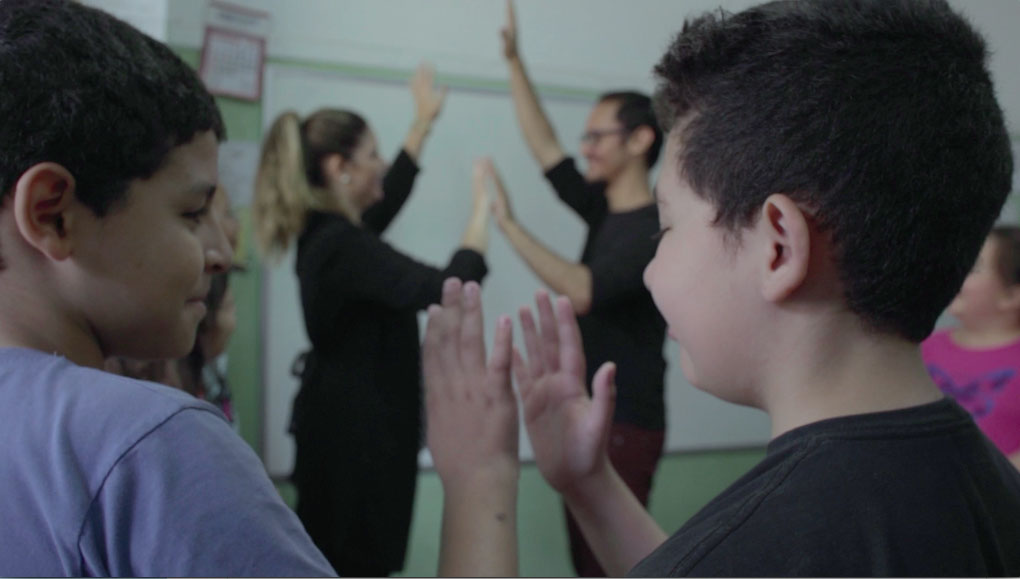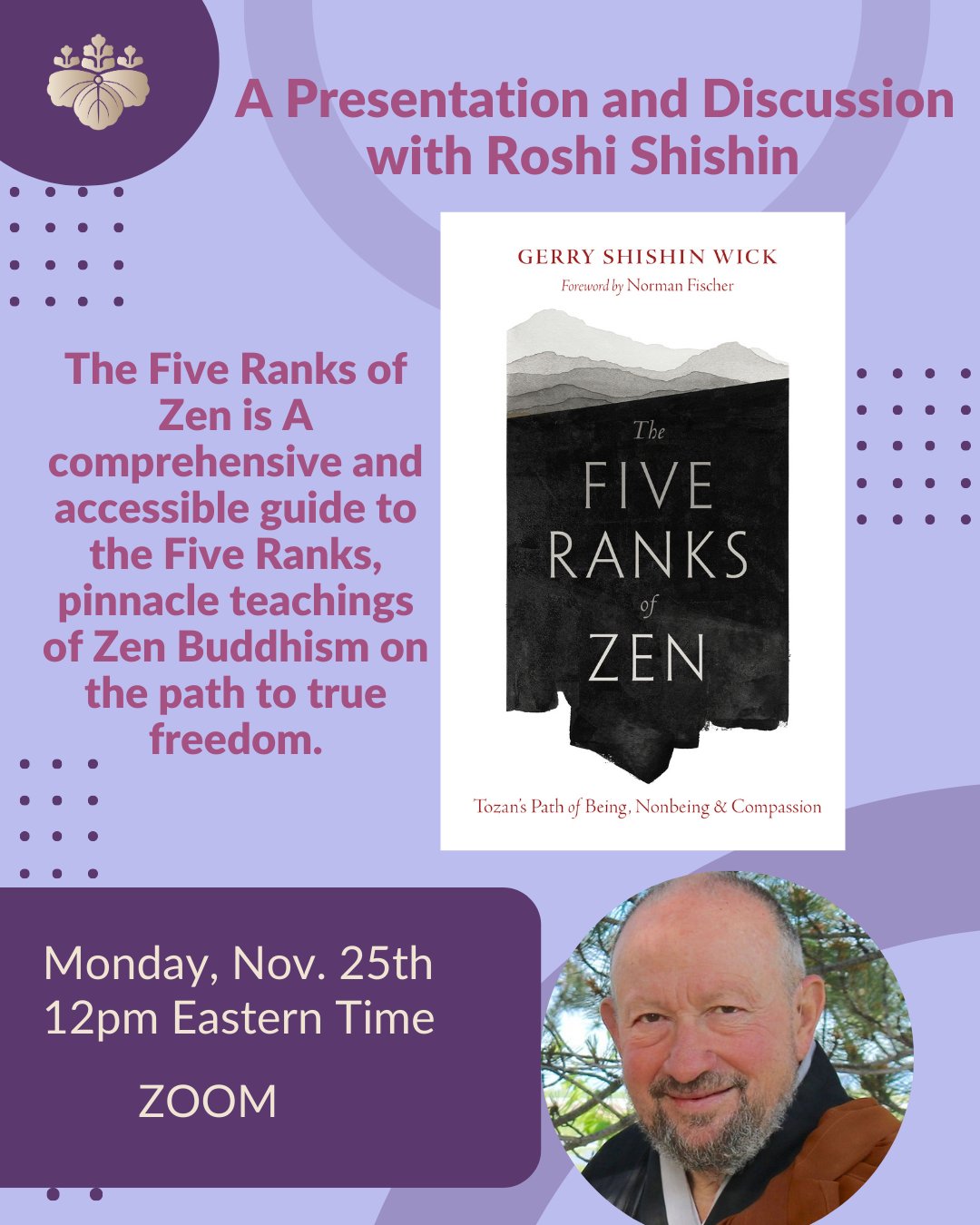 J. Ovidio Waldemar, M.D. is a long time member and contributor to the Zen Peacemakers. He is an American-trained Brazilian psychiatrist who has for the last 20 years been active in the Viazen, the Porto Alegre Zen Center. With the SENTE program, Ovidio weaves his Zen Peacemaker practices of meditation, council practice and the Three-Tenets with his clinical psychotherapy experience to support the children and community of Porto Alegre in South Brazil. Video and full report below.
J. Ovidio Waldemar, M.D. is a long time member and contributor to the Zen Peacemakers. He is an American-trained Brazilian psychiatrist who has for the last 20 years been active in the Viazen, the Porto Alegre Zen Center. With the SENTE program, Ovidio weaves his Zen Peacemaker practices of meditation, council practice and the Three-Tenets with his clinical psychotherapy experience to support the children and community of Porto Alegre in South Brazil. Video and full report below.
INTRODUCTION
Twenty years ago Daniel Goleman and several educators created CASEL, an organization with the goal of promoting Emotional Intelligence in schools through a program called Social and Emotional Learning (SEL). SEL is the process of acquiring the skills to recognize and manage emotions, develop caring and concern for others, establish positive relationships, make responsible decisions and handle challenging situations effectively (Sel implementation guide, pg 11). Research shows that besides academic competence, SEL skills are also fundamental to a happy life. Today there are in several countries various evidence based programs certified by CASEL, which are taught in schools alongside the traditional subjects. A meta-analysis (Durlak et al) presented findings from 213 school-based, universal SEL programs involving 270,034 kindergarten through high school students showing that compared to controls, SEL participants demonstrated significantly improved social and emotional skills, attitudes, behavior, and academic performance.
THE BRAZILIAN EXPERIMENT
In Porto Alegre, Brazil, seven years ago a combined Mindfulness and SEL program began to develop sponsored by the Instituto da Familia de Porto Alegre (INFAPA), a social clinic and a post graduate school for psychotherapists with a systemic orientation. Coordinated by the first author, a Child Psychiatrist and Mindfulness teacher associated with Zenpeacemaker International and the Porto Alegre group Viazen, this project was developed entirely without outside funding. This was possible due to the social mission of INFAPA and the inspiration of the Zenpeacemaker perspective of using the “ingredients that you have, with the people who need it the most.” (Bernie Glassman). It was also based on the effort and dedication of young psychologists who volunteered four hours a week of their time in exchange for weekly supervision in learning and developing the new method. Eighteen different professionals participated along those 10 years, six of them having now at least four years of experience with the method. We feel this program now is well established and thanks to a partnership with the a research team of the local Medical School, we are able to present the results of a case control study whose goal was to evaluate the impact of the new method in the mental health and quality of life of the students (Waldemar et al, Psychology and Neuroscience).
In Brazil, public schools are attended basically by the poor class because they are underfunded and the teachers poorly paid. Most teachers work 60 hour week schedules to make ends meet and students attend classes either in the AM or PM, to make room for all them.
Many of the students came from disorganized single mother families, several fathers were in jail or involved with drugs and almost 15% of the students lived in group homes.
The school asked fifth graders to be the subjects for the study because this is the last grade where they have only one teacher for all the disciplines and sixth grade teachers usually complain that sixth graders show difficult adaptation problems with the many new teachers in the 6th grade.
The school had positive expectations that the program would lead to more collaborative students in the sixth grade. This indeed has happened.
THE METHOD
The method followed the general orientation of CASEL and each classroom received up to 12 interventions of one hour each to teach the five basic CASEL skills:
1- SELF AWARENESS
2- SELF MANAGEMENT
3- SOCIAL AWARENESS
4- RELATIONSHIP SKILLS
5- RESPONSIBLE DECISION MAKING
Usually these goals were dealt sequentially, but priority was always given to any urgent issue brought by the students, having to do with problems in school, at home or with colleagues. The interventions usually started and finished with exercises of Mindfulness of Breath (Burke). In between we interspaced reflexive and playful activities, as well as informal mindfulness exercises.
To develop positive relationships and to teach how to deal constructively with conflict we taught the Council Method of the Ojai Foundation (Zimmermann) and also principles of Non Violent Communication (Rosemberg) adapted for the age of the students.
In each of the meetings, we tried to mix reflexive and playful moments. It is important to note that for the past three years our program has been a part of a larger intervention with the catchment area schools of the Family and Community Clinic of the UFRGS Medical School.
There certainly have been many roadblocks in the implementation of the program, but a democratic leadership and a weekly meeting that now includes representatives from all the schools involved in the wider program has been of fundamental importance to tolerate and overcome the normal periods of uncertainty and confusion that eventually lead to creative and positive outcomes (Senge et all, Glassman).
IMPLEMENTATION:
Introduction
We will try to give an idea about what happens in the classroom but it is almost unnecessary to say that what actually happened over the 10 years and 25 classrooms was certainly more varied and complex.
We enter the classroom and ask: you learn math, history, Portuguese, music but who teaches you how to feel well? The students look at the teacher with curiosity, what kind of question is this? They never imagined such a topic could be discussed in class! The teacher explains that we are psychologists and this is one of the topics that psychologists talk about with young people and that we are going to have a series of weekly meetings with them to talk about this subject. We ask the students to give examples of situations in which they feel good and others in which they feel bad. They usually say that they feel bad when criticized, when parents don’t pay attention to them, when they are ridiculed, bullied or have to do something they don’t want. And what makes them feel good? The opposite: when they are praised, receive attention, don’t have fights at home or are doing something they like. Next the teacher says: so if we all avoid criticizing trying to praise instead, respect and pay attention to people, avoid fights and try to do the things we like we are going to feel better, right? Of course we were introducing the Golden Rule, “treat others like you want to be treated!”. The students generally agree with this but come to the conclusion that we don’t have patience to act the way we would like (we all know very well how it is much easier said than done!). Again we tell them «right you don’t have patience, but has anyone taught you how to have patience? Of course not, so we have to learn how to be patient!» At this moment we are ready to start teaching the kids the mindfulness of breath exercise, explaining that for each 3 minutes of exercise we build up a 3 minute reservoir of patience that can be used when we most need, much the same way physical exercise will help us when we need that extra muscular effort! As it can be seen, we use language that makes sense for the 11 year old kids.
Now some examples of how we teach the SEL competencies.
Self Awareness
We start by teaching how to recognize, name and express feelings, positive and negative. One exercise for example involves giving colors to the emotions students are experiencing. We also have the ‘Deck of Cards with all the Emotions”. Each student draws a card and tells a story about that emotion. One girl picked the sadness card and started to cry, saying she felt bad about being called a derogatory nickname. A colleague expressed his surprise to her reaction saying he himself had called her by the nickname because he did not know how bad she felt. He promised not do it again.
There is also the exercise in which each student writes down a family problem and puts the paper in a box. Another reads aloud the problem and many colleagues share experiences and opinions about how they would handle the situation (we tell students to avoid telling what to do, instead they can share similar experiences).
One day we were asking the group about how they were feeling and a girl started to tell how sad she was because her parents were divorcing. She started crying and some of her friends came close to embrace and console her. After she calmed down the group talked about how that has happened to others too, how difficult it is and that bad feelings will eventually pass.
Self Management
We use the Mindfulness of Breath exercise for teaching to “stay calm and be patient”. We emphasize the effort and not the results, suggesting that just keeping quiet is a very good outcome! We explain that the combination of alertness and relaxation that comes with the breathing exercise can be used to compete in the well known “Simon says” game, which they love to play.
They also use this skill to play the game of “staring at each other” without bursting out laughing! We also use silent meals –mindfulness of eating– to teach about self management and truly appreciating the flavor of foods.
Relationship Skills and Social Awareness
We employ a lot the Fishbowl technique, with the following Council intentions (Zimmerman and Coyle):
1- Deep Listening: we taught them to use mindfulness of breath “to listen deeply, with the “whole body”. We liked to say that the ear is too small for good listening! They also understood that listening mindfully is a very effective way to become more patient, a quality they accepted as highly desirable.
2-Only the person who has the talking piece may talk, otherwise we can’t listen mindfully! With time they get more skilled at raising their hand and waiting their turn.
3-Using “I” statements, expressing our needs and opinions in the first person, rather than criticizing others thoughts and feelings. We called this “to speak in favor of something and not against something”.
4- Talking from the Heart: express the feelings and experiences that led to the ideas, trying to describe why you think you got where you are.
5- To be as brief as possible, so more people have a chance to speak.
An example: a 5th grade students complained about gender tensions, the usual routine of boys complaining about girls and vice versa. In the exercise first the boys sit inside and talk about what annoys them about the girls, while the girls listen quietly outside. Then the girls go inside and the boys listen from the outside. After, all sit in a circle and make comments about what they have learned from “deep listening» to each other. The consensus was that it helped a lot in the effort to try to improve the relationship between the genders.
Some more vignettes :
- We were organizing one more fishbowl when a girl comes and says that she does not need to participate anymore because she took home the exercise of taking turns to listen to each other and now she and her mother are getting along much better!
- Another student follows suit and tells that at home his father and sister liked the exercise but he is sorry the mother doesn’t have the time to participate.
We were told the following story by a student: one teacher came into the classroom very agitated and anxious because she had little time to give the test, so one of the students raises her hand and when she catches the teacher’s attention she says: Please breathe deeply teacher, breathe deeply”! Both the teacher and the classroom quickly recovered the good humor!
Feelings of empathy and collaboration are also introduced with games like collaborative musical chairs, where different from the regular musical chairs, the chairs diminish but the number of players remains the same, forcing the participants to accommodate to seating more than one person per chair available. We also teach about cooperation with the example of the “beach tennis” game where you have a win-win situation, different from regular tennis, where there is always a loser.
Responsible Decision Making
One day we arrive and are told that a former 13 year old classmate had just been assassinated, involved by his older brother in a drug war between gangs. One boy starts by saying that this classmate was violent and that he himself had suffered at his hands: “he got what he deserved! Another one said that it was true he was rough, but that the boy was also nice and had helped him in a number of situations. A third one who had attended the funeral made similar comments and described how the boy’s family was devastated by what had happened. After many other students expressed their feelings, the boy who initially spoke asked to speak again and retracted what he had said, explaining that listening to his colleagues he was able to see also good aspects in the classmate: “ he sure needed to learn a lesson but it was very wrong to kill him and I am sorry for his family!”.
FOLLOW-UP
Three fifth grade teachers who attended the interventions declared the it had been very effective for the students and also for themselves. A video testimony by one of the teachers of the sixth graders who finished the intervention confirmed that the students were “much easier to deal with” than the regular students who had not received the intervention : “they seemed calmer and more collaborative”.
CONCLUSION
Our academic paper was published in 2016 in Psychology & Neuroscience and had very good reviews. We also started a regular course for teachers to learn and implement our method in the public schools where they teach. We are now ready to start training teachers in a bigger scale, using online resources too.

REFERENCES
Glassman, B. Instructions to the Cook, Bell Tower, NY. 1996.
Napoli, M., Krech, P. Holley, L. Mindfulness training for elementary school students: The attention academy. Journal of Applied School Psychology, 21, 99-125 (2008)
Burke,C. Mindfulness-Based Approaches with Children and Adolescents: A Preliminary Review of Current Research in an Emergent Field, J Child Fam Studies (2009)
Felver et AL (2013) Mindfulness in School Psychology: Applications for Intervention and Professional Practice, Psychology in the Schools, 50 (6)
Goleman, D. (2007)Inteligencia Emocional, Rio de Janeiro, Objetiva.
Zins, J., Payton, J. W., Weissberg R. P., & O’Brien, M. U. Social and emotional learning and successful school performance. In G. Matthews, M. Zeidner, & R. D. Roberts (Eds.), Emotional intelligence: Knowns and unknowns (pp. 376-395). New York: Oxford University Press, 2007
Durlak, J.A., Weissberg, R.P., Taylor, R.D., Dymnicki, Schellinger,K.B. The Impact of Enhancing Student’s Social and Emotional Learning: A Meta-Analysis of School-Based Universal Interventions. Child Development, January,February 2011, Volume 82, Number 1,pages 405-432
Shafer, D., Fischer, P. et al. (1996).The NIMH Diagnostic Interview Schedule for Children. Journal of the American Academy of Child and Adolescent Psychiatry 35, 865-77.
Thomas Achenbach’s study is described by D. Goleman in “The educated heart”, Common Boundary, November/December 1995.
Huesmann, L.R., Guerra, N.G. (1997). Children’s normative beliefs about aggression and aggressive behavior. Journal of Personality and Social Psychology 72, no. 2, 408-19.
Devaney,E. et all (2006) Sustainable Schoolwide Social and Emotional Learning (SEL), Collaborative for Academic, Social and Emotional Learning (CASEL), Implementation Guide and Toolkit, University of Illinois at Chicago
Rosemberg, M. (2003). Non Violent Communication, “A Language of Life”. Canada: PuddleDancer.
Senger, P., Scharmer, O., Jaworsky, J. Flowers, B. (2004). Presence: Human Purpose and the Field of the Future. United States: Society for Organizational Learning.
Zimmerman, J. y Coyle,V. The Way of Council, Branble Books, 1996
2013 CASEL Guide
Effective Social and Emotional Learning Programs
Preschool and Elementary School Edition
Zins, J., Payton, J. W., Weissberg R. P., & O’Brien, M. U. (2007). Social and emotional learning and successful school performance. In G. Matthews, M. Zeidner, & R. D. Roberts (Eds.), Emotional intelligence: Knowns and unknowns (pp. 376-395). New York: Oxford University Press.
Durlak, J.A., Weissberg, R.P., & Pachan, M. (2010). A meta-analysis of after-school programs that seek to promote personal and social skills in children and adolescents. American Journal of Community Psychology 45, 294-309.
Weissberg, R.P., Durlak, J.A., Taylor, R.D., Dymnick, A.B. & O’Brien, M.U. Promoting social and emotional learning enhances school success: Implications of a meta-analysis.
Thomas Achenbach’s study is described by D. Goleman in “The educated heart”, Common Boundary, November/December 1995.
Huesmann, L.R., Guerra, N.G. (1997). Children’s normative beliefs about aggression and aggressive behavior. Journal of Personality and Social Psychology 72, no. 2, 408-19.
Devaney, E. et al (2006) Sustainable Schoolwide Social and Emotional Learning (SEL), Collaborative for Academic, Social and Emotional Learning (CASEL), Implementation Guide and Toolkit, University of Illinois at Chicago
Waldemar, J.O.@Falceto,O. Cuidado Sistemico de la Salud en las Escuelas Publicas, in Medina,R.9(ed) Pensamiento Sistemico, Litteris, Mexico 2014
Waldemar, J.O.@Falceto O. Consultoria Multidisciplinar às Escolas, Revista Nova Perspectiva Sistemica, Abril 2015, Instituto Noos, São Paulo
Waldemar, J.O. et al “Impact of a Mindfulness and SEL program in 5th graders of Public School Students in Brazil, Psychology&Neuroscience, March 2016”





Un comentario
Parabéns.! Trabalho importantissimo para crianças, para preparar próximas geraçoes a ligar com o stress.